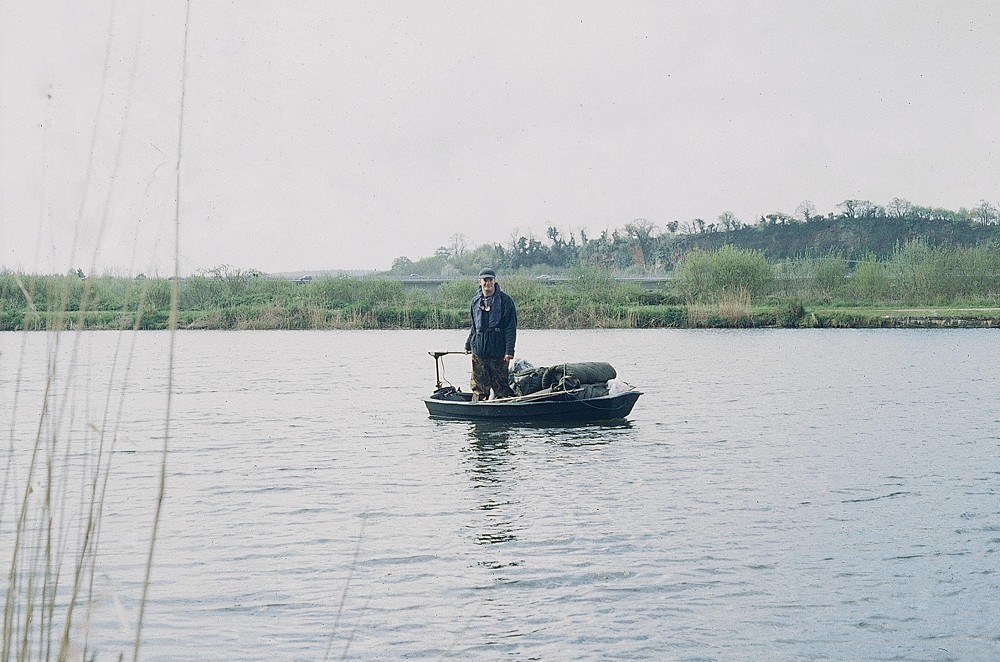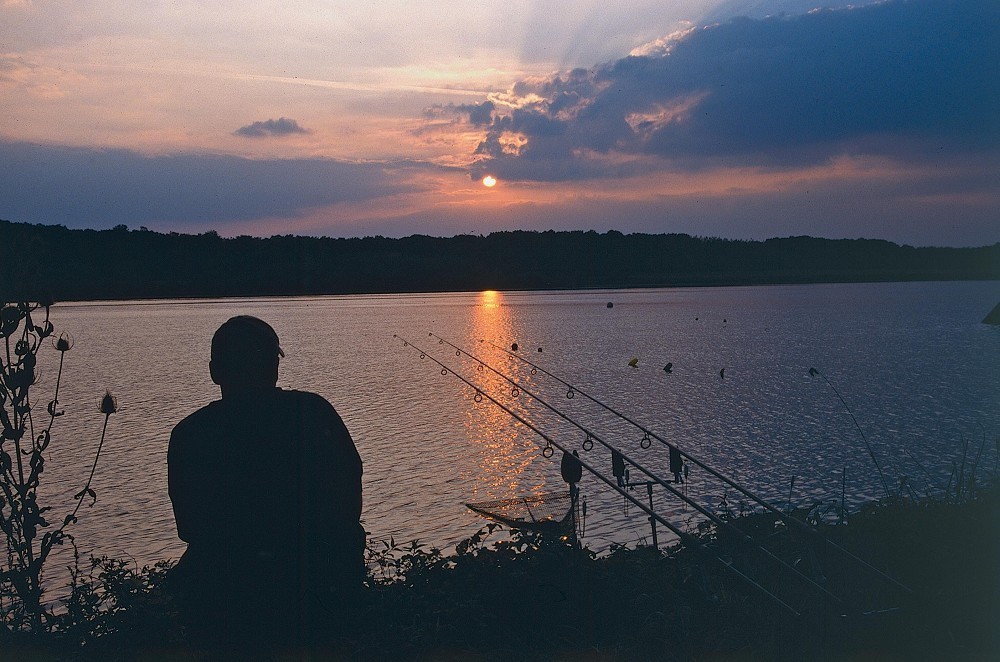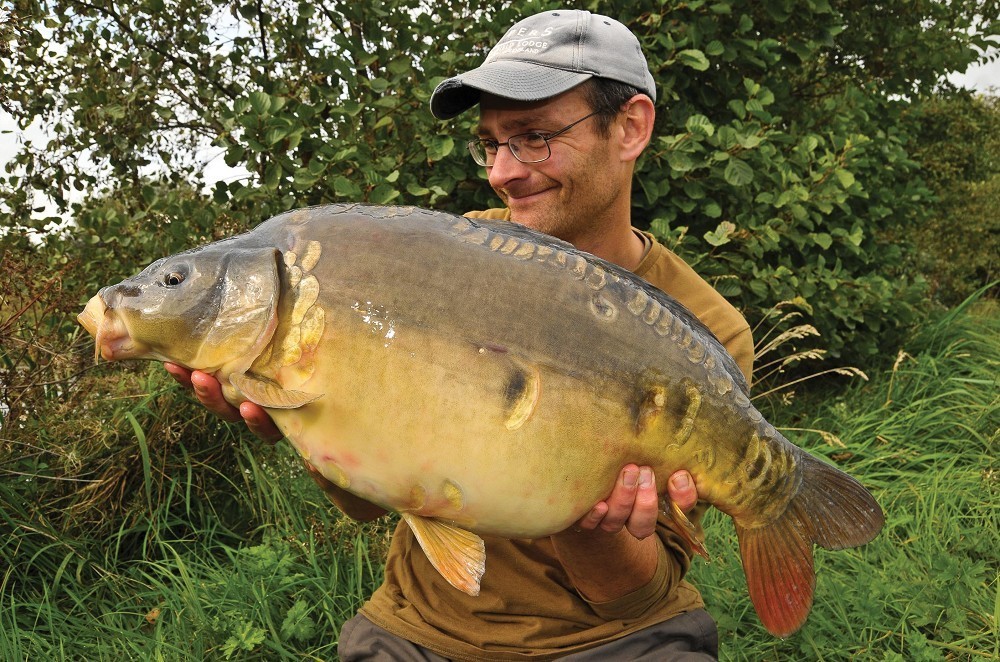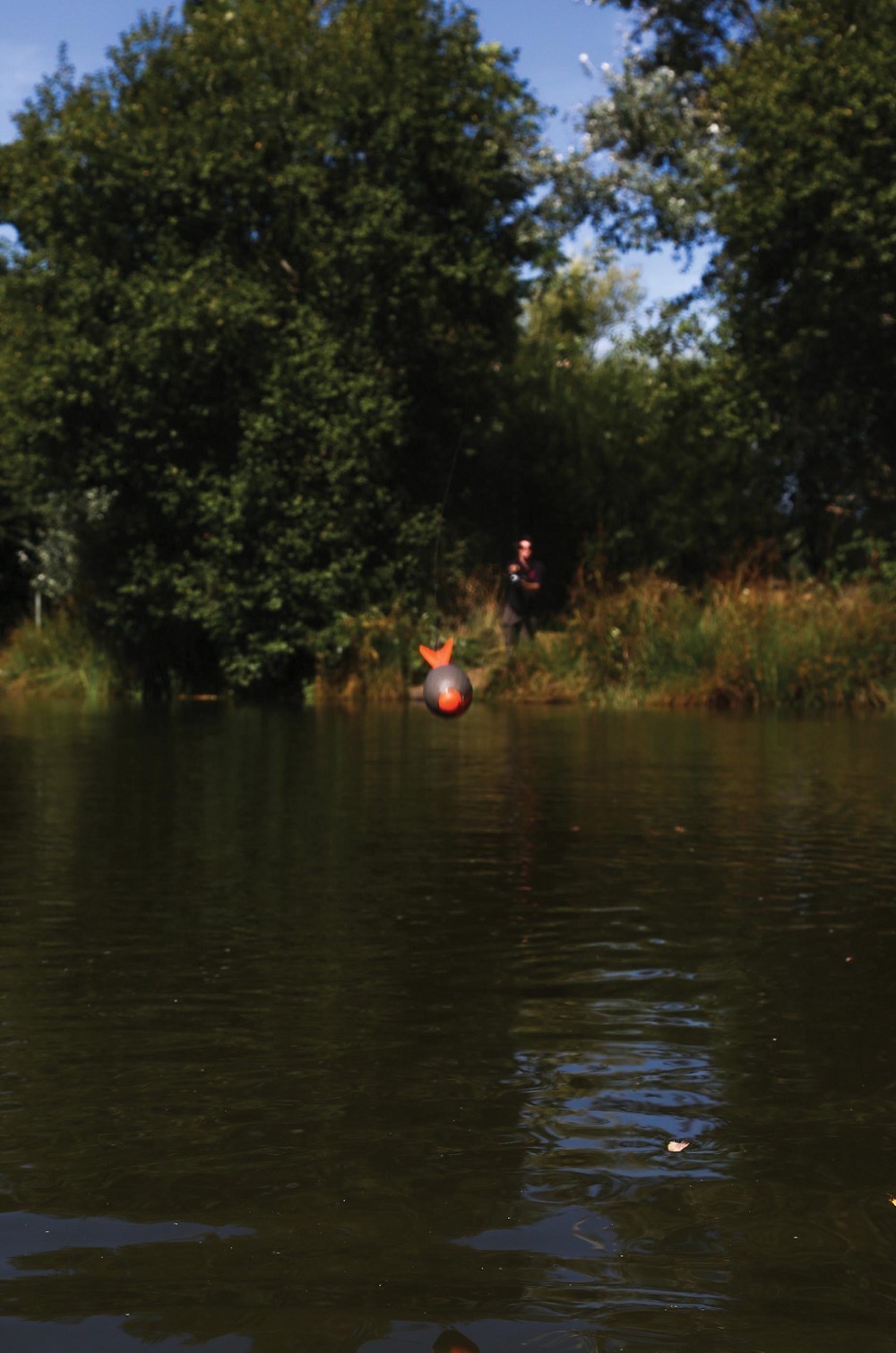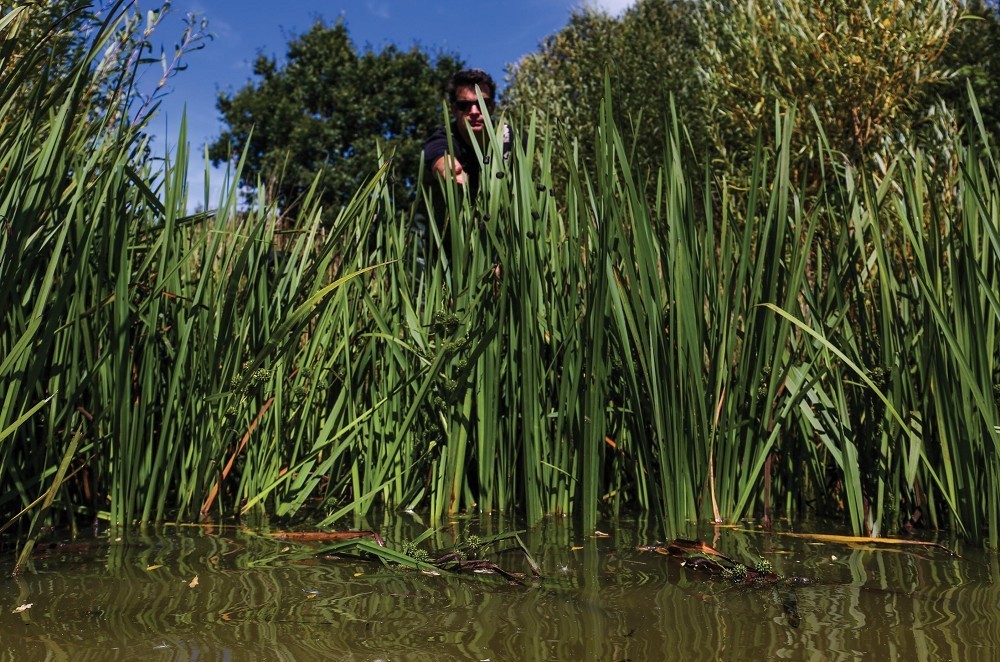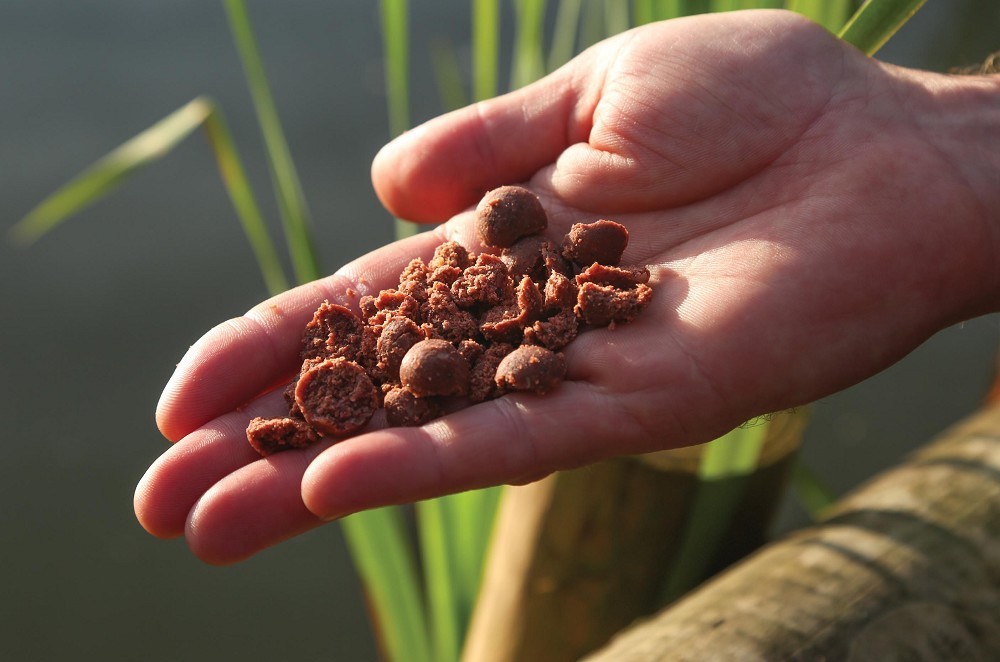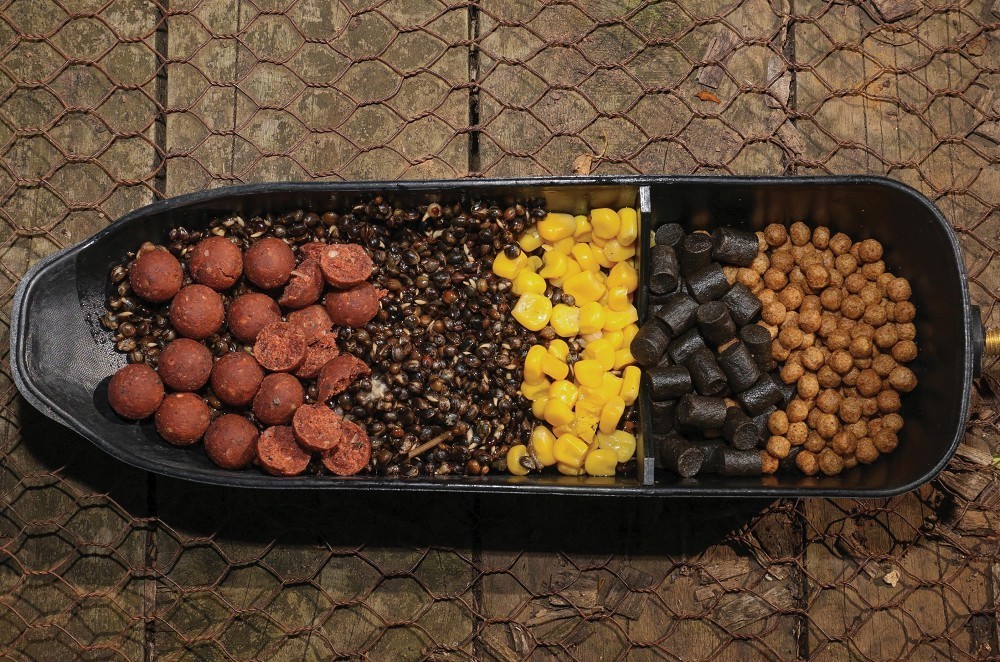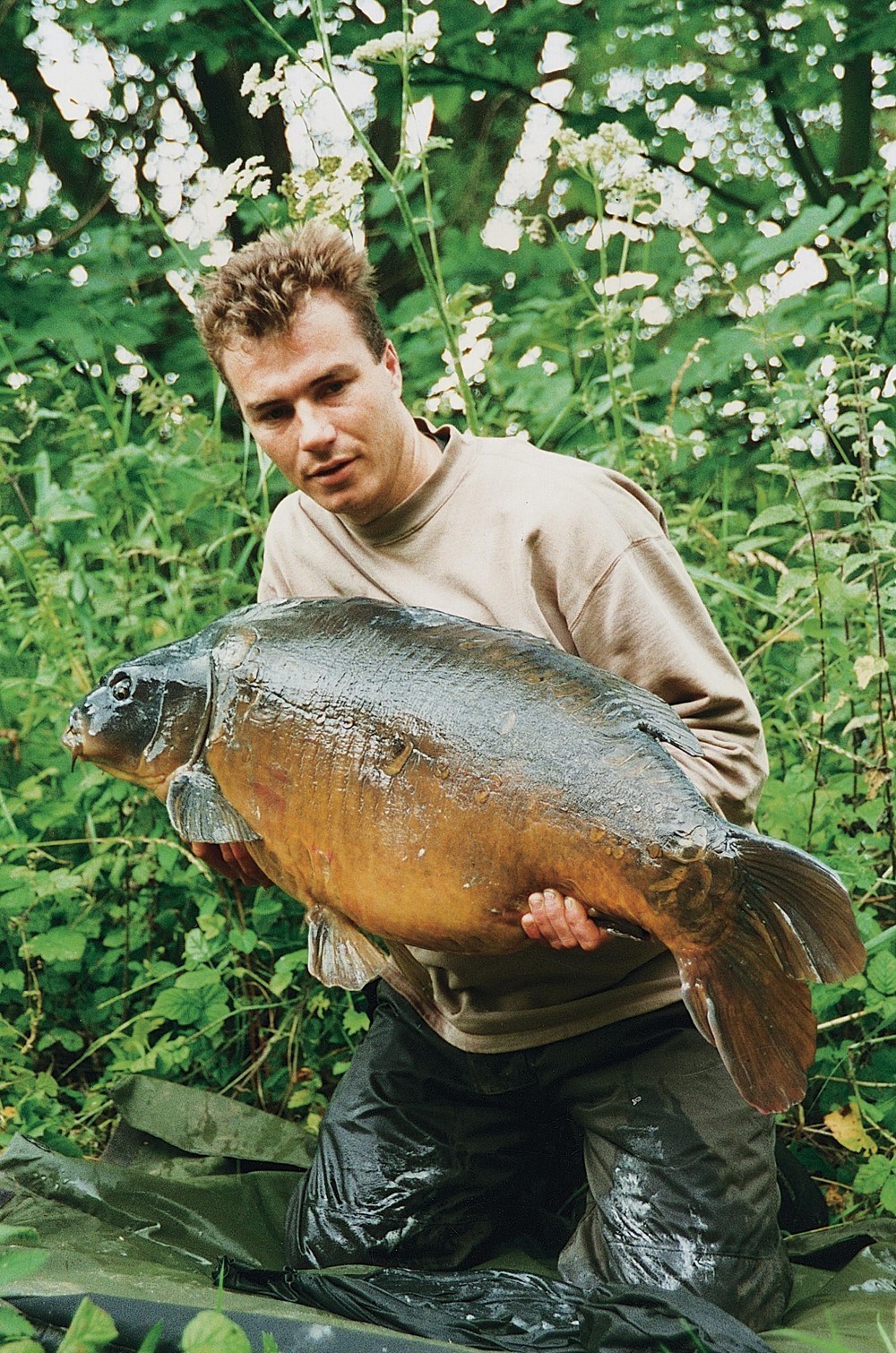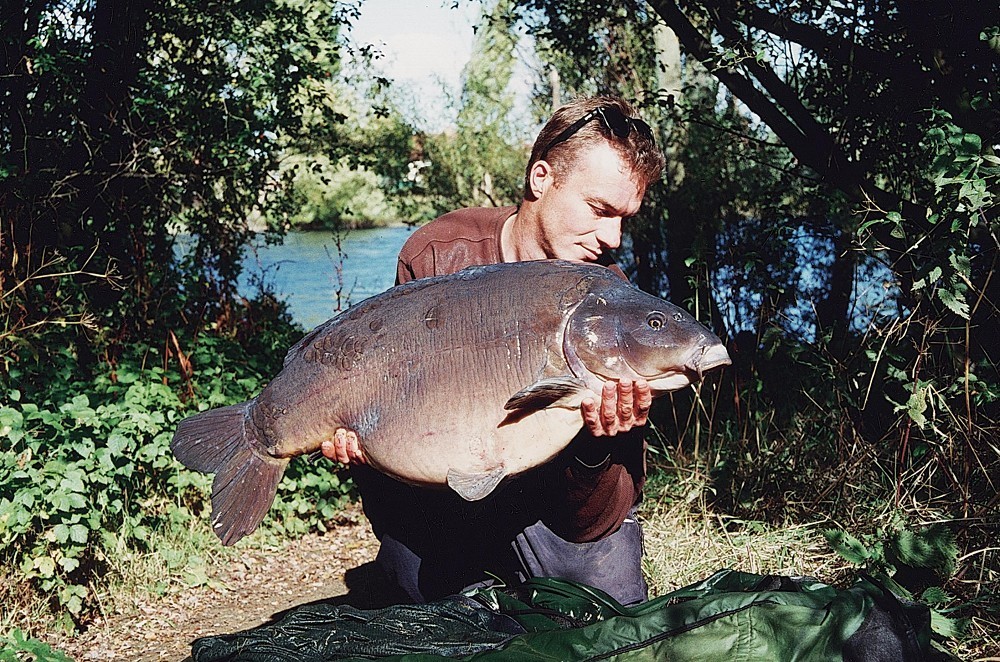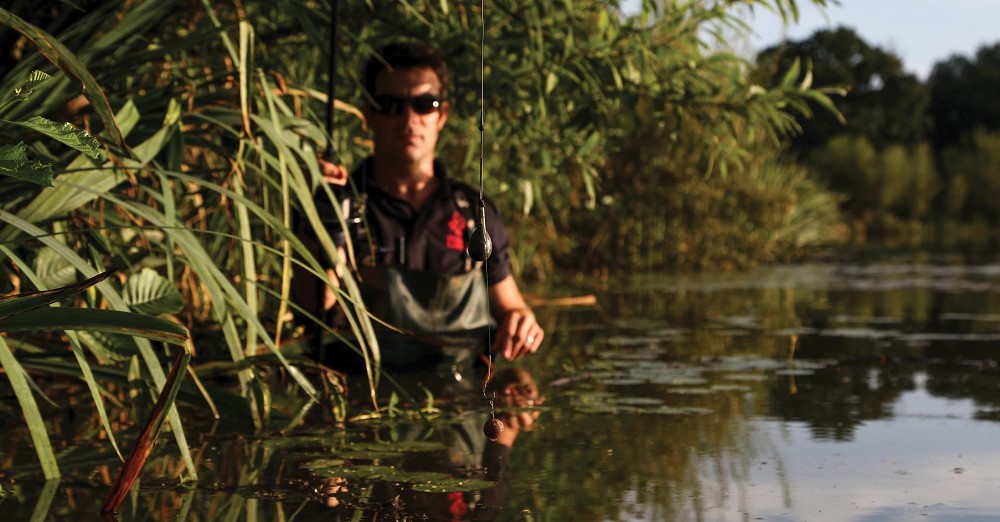
Where you are going wrong with bait and bait application
Diggerlakes owner Ben Gratwicke takes a close look at bait application and reveals what he's learnt over the last 30 years
How much will a carp eat? The answer to that depends on so many parameters and that’s before we put a carp in a high-pressured day ticket water environment where every mouthful could have a nasty surprise in it! In warm water I have fed carp until they were passing almost whole pellets such was the greed and having spot-on water conditions.
On a very wild and lightly fished 300-acre water many years ago I mass baited with a right concoction of food in a bid to get the carp visiting my chosen area. Hemp, tigers, pellet, boilies and anything else I could prepare for the banquet was put in from boat and bank. I have never put in so much and over a spring I used approximately 300kg (dry weight) of “carp food” (it could have been more but I didn’t record every baiting). I can hear you now saying, “What?!” Well, the reason for the amount was four-fold…
1. There was a big population of bream so they would eat a large percentage of my feast so I wanted to try and feed EVERYTHING in a bid to draw in and stop the carp.
2. My fishing time was limited to mostly nights so I had little time to locate the carp, and the water in question was busy with boats and walkers during the day and often idiots during the night, plus past springs had taught me a few things and the area in question was a prime spring area.
3. I could drop onto this area at any time, day or night, and be in with a chance with the spots being close in and always prepped.
4. The last reason was EVERYTHING I threw into this water was eaten. How do I know? Well I used a viewing bucket to check the spots and the deeper spot I would often “dip” with a long handled crab net and see what was left. A great method which I bought over from my fish-farming career.
One important point is this water was hardly fished, especially the distance I was from the car park, so the boat enabled a completely different approach and I never got to the area to find anyone else set-up in it.
One particular weekend stands out when I arrived for a rare Friday through to Saturday night session and loading the boat up with 25kg of pellet, 30kg of hemp, Vitalin and a several kilos of 20mm boilies. I navigated my way to the spot in the trusty carp boat which looked a little low in the water as the weight of me, the gear and the bait was pushing the “floatability” of my craft. I liberally split all but a couple of kilos of the carp feast over the three spots and on leaving thought that should keep them busy and boated off to fish another area in a bid to return at first light to see how they were doing.
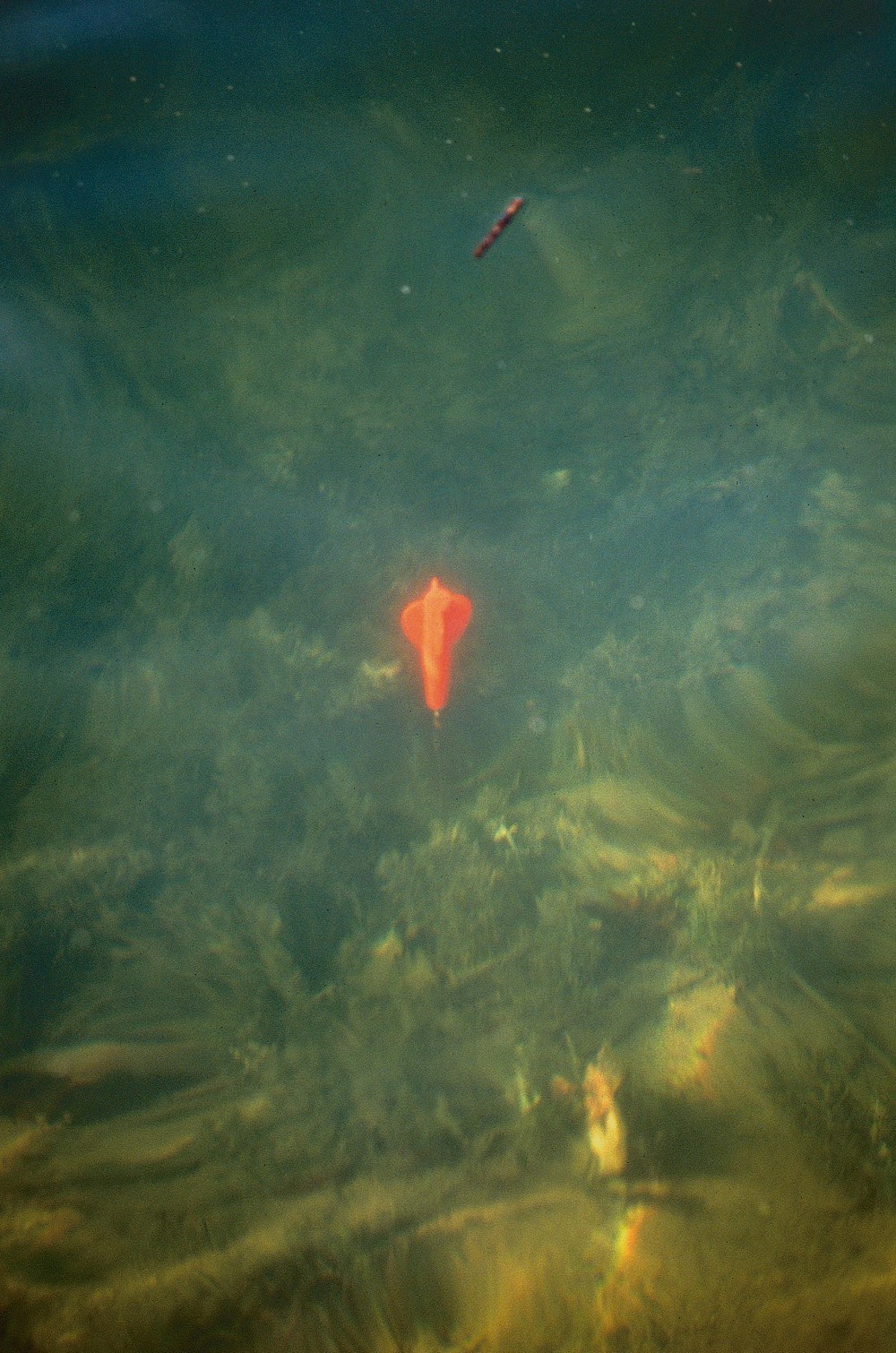 I could see the bottom on the margin spot with a viewing bucket and for the deeper spot I used a “dip”
I could see the bottom on the margin spot with a viewing bucket and for the deeper spot I used a “dip”I fished an uneventful night up the bank and at first light I boated towards the baited area. I ditched the boat and walked the last 100yds or so to check the spots. On arriving I was met with what can only be described as a cauldron of activity with a shoal of bream topping just off the area and loads of cloudy water. I also spotted a rather large carp ghosting through the muddy water, exiting one of the close in marks.
Quickly I shot back to the boat where all three rods had rigs and baits on, I quickly clipped leads on and then, very carefully, I drifted close to two of the spots with the electric outboard on low. The bream and carp are not scared of the boats in this particular water and they just used to drift away, only to come straight back again. On passing the near spot I saw a very large common and a mid-ish 20lb mirror come off the baited area with puffs of silt exiting their gills. As they passed under the boat I lowered a rod on the spot and then swung the other rod out onto the deeper spot and then boated into the bank.
Over the next hour the water became clearer and clearer and by mid-morning the bream could be seen sat digesting their gut fulls of food and the carp were also lazing about in the spring sunshine. Opportunity missed BUT even to this day I had no idea that amount of food would be eaten in less than 11hrs and there was no way I was going to set-up for an overnighter on 80 odd kilos of bait!
Now before you get any mad ideas, this happened a fair way into the baiting campaign and was the most I had put in at one sitting, but by 11am I was bored so I went out in the boat and checked all three spots and there was NO bait left, not a thing that I could see and dipping the spot brought back nothing. The margin spot had been so well dug over from the continued baiting that a concrete block had appeared and starting to be dug out of the side of the bank by the activity.
I learnt a lot from that experience and as the spring drew to a close and the warmer weather began in earnest I finished the campaign with a nice tally of fish without one repeat capture, without sitting for days on beds of bait and by using double 20mm boilies I only had two bream. This is of course a long way from your average bait application and is a long way from day ticket fishery life, but it shows a type of application that suited my fishing and the venue!
Back to Diggerlakes
Enter angler number 1 who I will call Master B. Now Master B, or MB for short, was one of the early regular anglers at the fishery and although in his own admittance he had not fished a lot of waters, he had a very good idea of how to use bait and on talking to him about the waters he had fished, he had always caught well, BUT one thing that stood out was his use of bait.
I would often spot MB walking the fishery with a bucket or buckets of bait and he was quite open to me about what he was up to once we built up a mutual friendship and trust. I kept a lot of his captures to myself, only repeating them once he had moved on.
MB used one type of boilie which was red in colour and had lots of Robin Red in. Over the course of his time on the fishery he caught a lot of fish by looking, baiting, watching, baiting some more and fishing when he felt it was the right time. If MB blanked he didn’t blame the bait, he just put it down to getting it wrong. If MB was going to fish he would usually start prepping an area a few days or even weeks before by baiting up at night or very early in the morning when either the lake was quiet or everyone was asleep. Over one summer MB applied a lot of this boilie to the lake and he gradually built up a few areas by steady baiting. This continued use of the same bait worked in his favour as the fish got used to it and would eat it in favour of other baits, to the point that when he left, it continued to be a very successful bait and I would imagine even now it would work as well.
Like Mr. Sneaky in the first article, MB spent a lot of time looking and as the summer season moved on he would bait according to where the fish liked hanging out. MB would find a feature that offered what he thought was the best spot to catch from and then over a period of time he would build the baiting up, starting off with a little bit of food and maybe some smaller particle type bait which would aid getting the spot cleaned by the carp. As time went on, more bait would be applied.
MB would choose spots that were not obvious to other anglers and also in swims that were not so popular in a bid to get the area working without anyone else cashing in. He would also try to fish midweek when the lake was generally quieter, using up precious holiday in a bid to get the result he was after. Once the fish were visiting the areas regularly, MB would usually give the spots one good hit of bait and fish the next day.
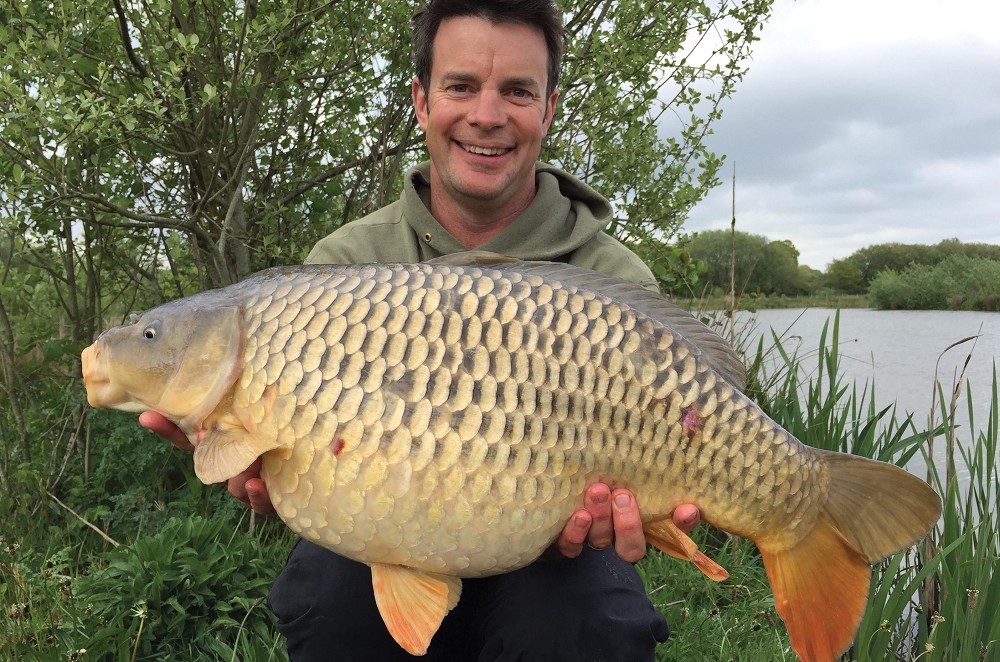 Heavy baiting saw the downfall of this fish, one of nine fish in a night and the use of some 20kg of mixed pellet, hemp and boilies
Heavy baiting saw the downfall of this fish, one of nine fish in a night and the use of some 20kg of mixed pellet, hemp and boiliesWhy MB did well
1. MB always used the same bait – one that he had confidence in and knew would work, and even when he blanked, he didn’t “blame the bait”.
2. He baited carefully and built the spot up choosing spots that were off the beaten track.
3. Don’t always be drawn into preconceived ideas or jump in the popular swims.
4. MB watched his baited area and learnt to read when to put more bait in and when to hold back. Often less is more and over-baiting a spot can kill it. You can always put more bait in, but you can’t take it out.
5. He took the blanks on the chin and speaking to him he always thought through why he hadn’t caught but didn’t let him change tactics unless he was doing something very wrong. Consistency is the key to success.
Let’s face it, we have all got it wrong and sometimes your average angler on a day ticket water has his or her set time, say a Friday to Sunday session and doesn’t have the time, the bait, or maybe not even the will of MB, or, as I described that sort of water to apply that kind of baiting, so how can and angler optimise their time/bait on your average day ticket water? Use the right bait.
Now, by this I mean one of two things, either the bait you have 110% confidence in or the bait that suits the water so if the water has restrictions then pick a bait that doesn’t break the rules or if there are a lot of nuisance fish don’t use soft baits or tiny baits that will get hammered by your unwanted quarry.
When you have found your fish have a serious think as to how to apply your bait, look at the area they are in: are they there to feed or are they resting up, or maybe they are patrolling a feature so think through the next step as once you have fired the bait in you CAN’T take it back out – unless you’re Rob Hughes that is! Don’t be too hasty with the spod or the catapult, take time to think through what’s in front of you.
Be patient
You have spent your money, you have got your week booked or your weekend and it’s time to flex the carbon and hit your local lake or a foreign holiday in search of a haul of the biggest carp known to man. You’re at the lake and it’s going to get it both barrels: spod, catapult and bait boat and then all three rods are on the spot ready for action! STOP! Have you ever considered baiting up and then leaving the rods in for the first night, second night or even longer before fishing? Why not bait up carefully and then leave your rods in for a while as this will allow the fish to become more confident? Food for thought. I know Mr. Penning has used this method abroad and done exceptionally well. Don’t be drawn by all the publicity as it’s only fishing and they are only carp. Enjoy.
Mistakes and fixes
Ben's top five snippets of advice
1. You’ve seen Berty Big Baiter on Facebook and he smashes ‘em up by firing in 5kgs of Whallop ‘Em Baits and lands a heap of fish. (A) Most, and I say most, of the well-known, successful anglers have seriously thought through their application and let’s face it, you never see the ads where they blank. (B) Don’t be drawn in by every new bait on the market, as most of the company’s original baits are just as good as the latest.
2. Some of the most simple and cheap baits are the best. (A) Sweetcorn is a MEGA bait and I bet on the top of many anglers all-time favourites list. (B) Pellet has many forms and carp LOVE IT and it’s very cheap at around £40 for 25kg of the finest fish food known to man. Halibut pellet is, without doubt, an amazing bait and feed. N.B. I watched the mighty Wraysbury get taken to pieces on the golden grains and some awesome multiple catches. I can’t even remember how many times Mary came out at over 50lb to the same tactic with Mark Tolland, aka Cockle and Simon Scott catching their PB’s at the time on this method. My first Warysbury fish in the shape of Measles came to three grains on the Hair with 10 grains placed around it!
3. Positioning your baiting to suit your hookbait. (A) Look at where the feature is you are fishing to: should you be baiting the nearside, far side, right or left, as let’s face it, a hookbait surrounded with bait is very predictable. (B) Why not fish your hookbait 10, 20 or even 30yds from the bait? (C) Use a different bait to your free offerings so, for example, bait with boilies and fish with a stack of corn or tigers.
4. Bait to the extreme! And by this I mean one way or another. (A) Have you ever had the time and the correct conditions to go to town on baiting and I mean baiting not a couple of kilos but serious fish food? I have watched anglers spend hours baiting up on some lakes only to sit back for the next 24hrs without a bleep and then all hell breaks loose and they reap the benefits. I am not talking a baiting campaign, I am talking a one hit hauling session when all the moons align. If a lake is fishing well and the conditions are spot-on then sometimes you just have to let ‘em have in a big way. (B) The other way is either a single or lots of smell but no food. Why not try introducing smell into the water with very little if any food and a nice hookbait in the middle, spodding soup or bags of flavour to get the fish looking but only giving them one mouthful?
5. Don’t be blinkered to one swim for baiting. (A) You may have chosen a swim but if it’s quiet on the lake why not carefully apply bait elsewhere? Prep another swim in case or just to spread your chances. (B) Baiting a few margin spots in the summer or even in the winter can be a great method and the use of regular baiting will keep the bites coming by hopping from one spot to another.



